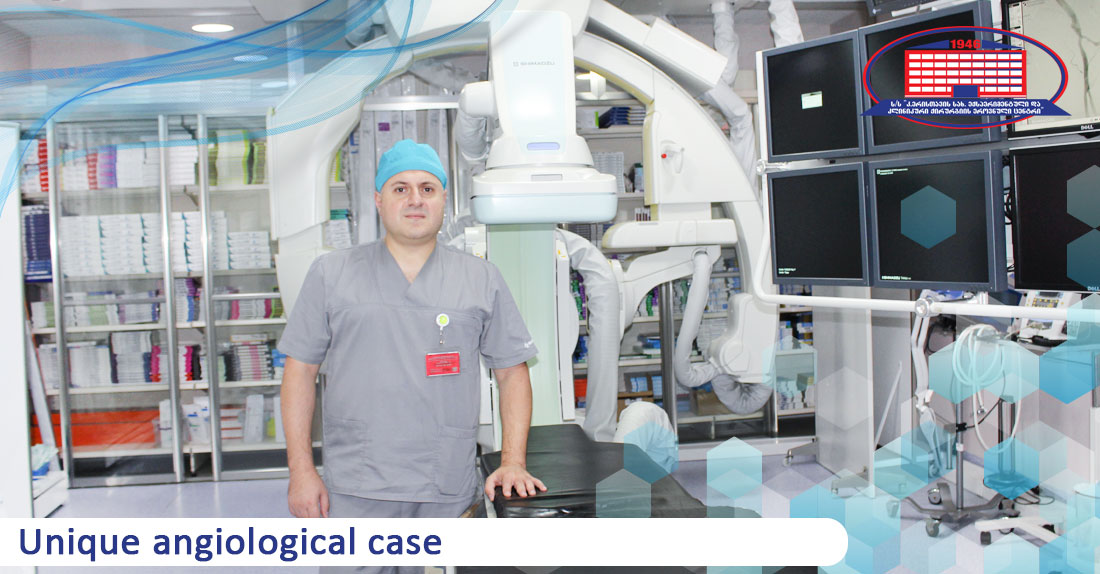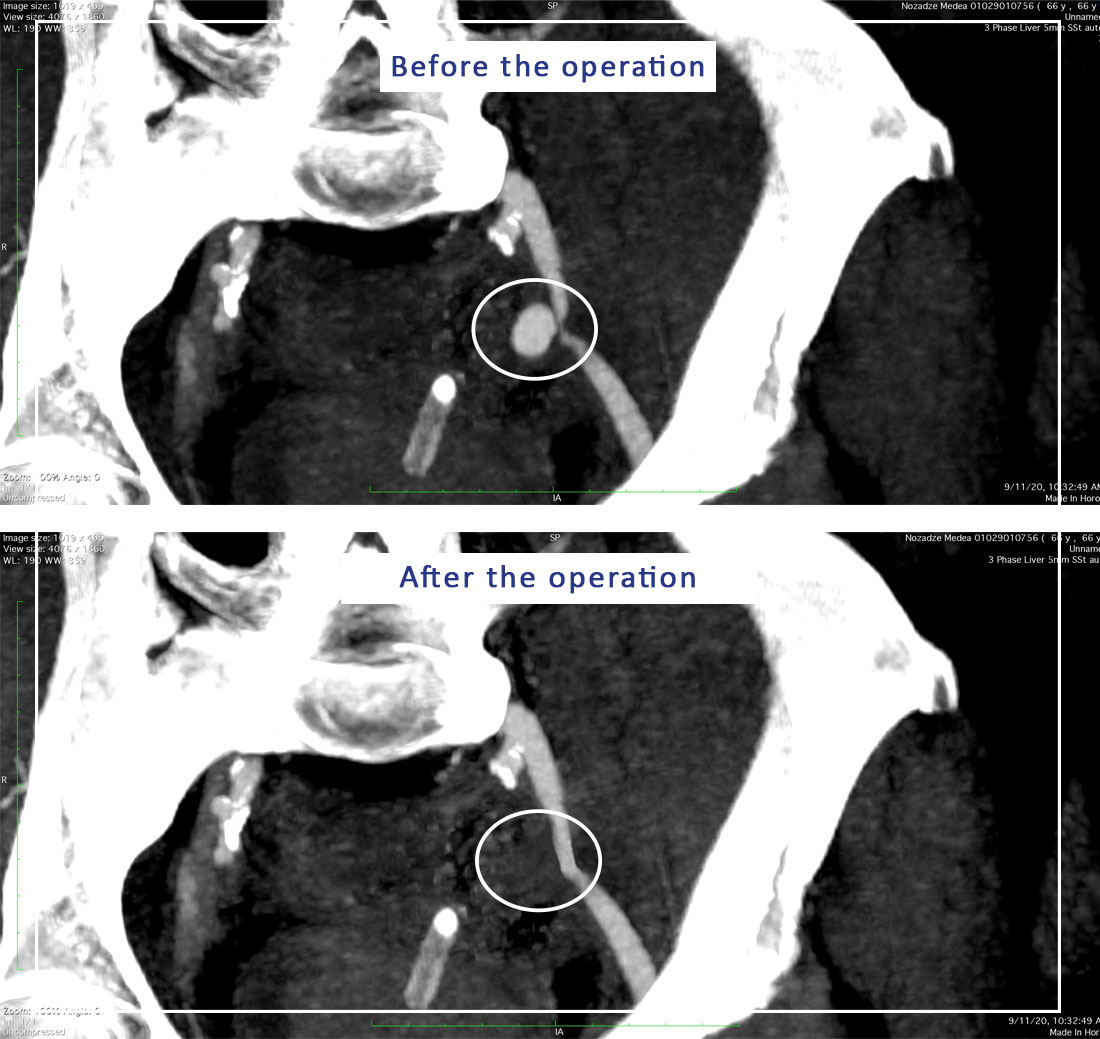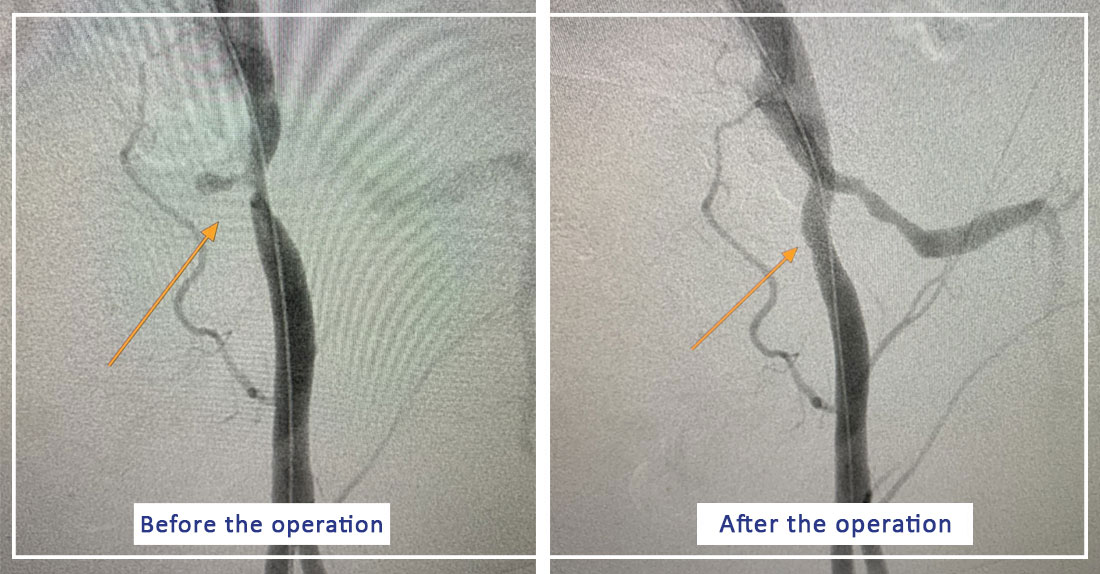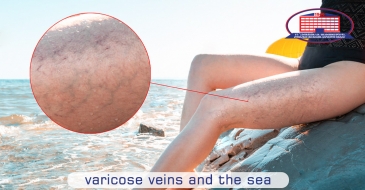
Unique Angiological Case at the Clinic "National Center of Surgery" - Indefinite possibilities of vascular surgery
In the interview you will learn the following information:
- Rare case of hematuria;
- Development of tumor invasion;
- Determining the method of treatment;
- Aggravation of the patient's condition;
- Surviving live;
- Vascular Surgery Service of our clinic.
About the specifics of working in the angiology department with a patient with severe pathologies, selfless work and a successful example of emergency management we are interviewing with the head of the department of endovascular, vascular and reconstructive Surgery Giorgi Jinchveladze.
- Mr. Giorgi, what can you tell us about the rare case which happened in our clinic?
–According to the patient, hematuria (bloody urination) started in the morning, suddenly, complaining of severe pain in the bladder area and urinary retention. He later urinated with difficulty, in small quantities, and with the addition of blood clots. When the intensity of the pain increased, he was initially taken to another medical facility, from where he was transferred to our clinic for further treatment and diagnosis by the medical transportation service.
-It is interesting for the reader, how did the tumor invasion develop?
–It should be noted that, the patient was diagnosed with uterine cancer years ago. Underwent radiation and chemotherapy. As for the tumor invasion (invasion of tumor cells into healthy tissue), we will tell you about it later.
- How was the treatment tactics defined?
–In the context of clinical-laboratory studies, the patient was examined by a urologist, and after that appropriate training was transferred to the operating room, where under spinal anesthesia (this type of pain is more commonly used in pelvic organs and lower extremities) endoscopic evacuation (removal, expulsion) of colts from the bladder was performed.
–Mr. Giorgi, when did the condition worsen and when did angiological involvement become necessary?
– The situation worsened in dynamics in a few days; Intense and growing hematuria was observed, which necessitated cystoscopy and liquidation of bladder tamponade.
Because the patient's condition remained severe, CT angiography was performed to provide accurate data in assessing the defining parameters of the disease (degree, quantity, and length of vascular stenosis), in the study of the anatomy of the damaged area, by determining the disease stage, which is very important in the case of further surgical intervention, in the definition of preoperative tactics and postoperative management. It was this study, that revealed a tumor process in the small pelvis that had invaded the bladder, uterus, and blood vessels. In particular, the tumor invaded the external femoral artery and caused its critical narrowing and disruption of its wall integrity by the formation of a false aneurysm. The latter was invaded into the bladder, from which bleeding process periodically developed.
– What kind of treatment was performed to the patient?
As soon as the narrowing of the vascular lumen and the cause of the bleeding were identified, the patient was transferred to the catheterization laboratory, where a stenting of the external femoral artery was performed, with a special coated stent. The operation was performed under local anesthesia with an approach from the carotid artery, which can be very sparing for such a severe patient. Two days after the intervention, the patient's condition was satisfactory in dynamics; Hematuria was no longer reported, and after appropriate treatment recommendations and prescriptions, he was discharged to go home.
“Vascular Surgery Clinic at the” National Center of Surgery“
We would like to remind you, that it was in our clinic in 1960 that the foundation was laid for the development of vascular surgery in Georgia. So the department of vascular, plastic and reconstructive Surgery has a very impressive past.
One of the defining factors of doctors' success is that they fully own the arsenal of ultra-modern equipment, and the catheterization laboratory is equipped with a modern Japanese-made angiograph - Shimadzu Trinias B12, which makes it possible to comprehensively eliminate such complex pathologies that were recently considered insurmountable.
Wish you health!
What are patients interested in
Varicose veins
Qauestion:: Question: Greetings, I have varicose veins, visible lumps all over the left leg. Is laser surgery, ablation possible? And what does it cost?
Abdominal Aortic Aneurysm
Qauestion:: Please tell me if the operation is now possible for a citizen of Azerbaijan. Abdominal aneurysm. What's the price?











